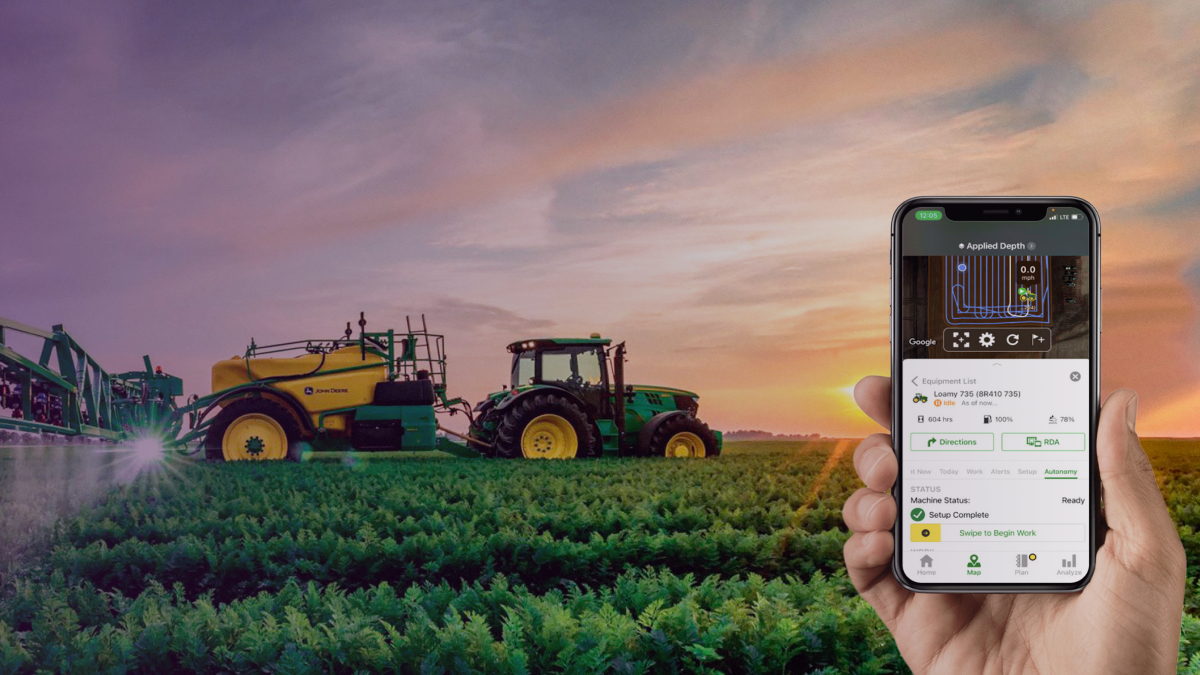AI Is Perfecting NextGen Agriculture Equipment
Autonomous solutions are changing the way farming is done, allowing the growth of healthier crops and achieving more yields and return on harvests. Automation of farming equipment offers numerous benefits in the form of faster and more precise operations regardless of weather conditions and time, along with the ability to take up heavy and highly complex operations like plowing and harvesting. These are some of the biggest reasons why the global autonomous farm equipment market is booming and is expected to be worth $135.4 Billion by 2026. Today we will take a look at some of the most interesting AI farming technologies and the data annotation that was required to create them.
A Fully Autonomous AI-Powered Tractor
In January of this year, John Deere unveiled a fully autonomous AI tractor that will allow farmers to harvest the most crops during the most critical times of the year. The new tractor offers 360-degree obstacle detection and the calculation of distance. After the images are created by the cameras, they are sent to a deep neural network for classification. It only takes the system about 100 milliseconds to determine whether the system can keep going or needs to stop, depending on whether any obstacles were detected. In addition to this, the tractor continuously monitors its position in proportion to the geofence, thereby making sure that it’s in the correct place.
John Deere provides a mobile operations center that provides farmers with all kinds of images, videos, and insights to adjust the speed, depth, and other actions performed by the tractor. If there are any mechanical issues with the tractor or its performance, the farmers will be notified so they can take the necessary actions.

Intelligent Herbicide Application
Another interesting technology from John Deere is the See & Spray system which allows farmers to spray herbicides in a targeted way. This technology is also fitted with computer vision cameras that allow the systems to distinguish between weeds that need to be sprayed and crop plants. In total, the cameras are able to scan more than 2,100 acres of farmland simultaneously. One of the biggest benefits for farmers is that they will be able to compare the weed map to their yield map and make decisions about their weed-control program.
Crop and Soil Monitoring With AI
Low cost and accurate assessment of crop and soil health have long been key to a successful farm and agricultural economy. Recent advancements in drone and satellite technology enable the acquisition of cost-effective, timely, and localized high-resolution multispectral imagery of agricultural land. AI and machine learning offer the ability to recognize highly valuable patterns in this and similar imagery. Farming soil contains various macro and micronutrients that affect crop health and play a direct role in the quality of the crop yield. When the crops are planted in the soil, farmers need to monitor how the crops are growing during all of their growth stages. It’s important to understand the connection between the environment and how the crops are growing to make adjustments to improve the health of the crops. Today, farmers rely on their own observations and judgment to determine these adjustments, but needless to say, this is not very efficient.
Instead, we can now use drones (UAVs) to capture aerial image data and train computer vision models to use this for intelligent monitoring of crop and soil conditions.
Visual sensing AI can analyze and interpret this data to:
- track crop health
- and make accurate yield predictions.
- detect crop malnutrition much faster than humans
What Types of Data Annotation are Required to Train Such Technologies?
The type of data annotation needed will depend on the functionality of the technology. For example, if we look at the first example with the autonomous tractor, we see that it needs to detect obstacles and orient itself in space. To enable such capabilities, data annotators would need to label or draw 2D bounding boxes around the various obstacles the tractor may encounter in a farming field. In addition to this, the tractor would need to constantly be aware of its location in proportion to the geofence. This means that more advanced data annotation techniques would be needed, such as 3D Point Cloud Annotation.
What this means is that the tractor is equipped with LiDAR technology which sends out pulses of light that bounce off objects and return back to the LiDAR. This creates a 3D Point Cloud, which is a digital representation of how the AI system views the physical world. Data annotators would need to label all of the objects on the 3D Point Cloud, which may also require semantic segmentation to allow the system to see and differentiate between small objects or ones that are hard to discern at first glance.
Trust Mind Support With All of Your Data Annotation Needs
Mindy Support is a global company for data annotation and business process outsourcing, trusted by several Fortune 500 and GAFAM companies, as well as innovative startups. With nine years of experience under our belt and offices and representatives in Cyprus, Poland, Romania, The Netherlands, India, and Ukraine, Mindy Support’s team now stands strong with 2000+ professionals helping companies with their most advanced data annotation challenges.




